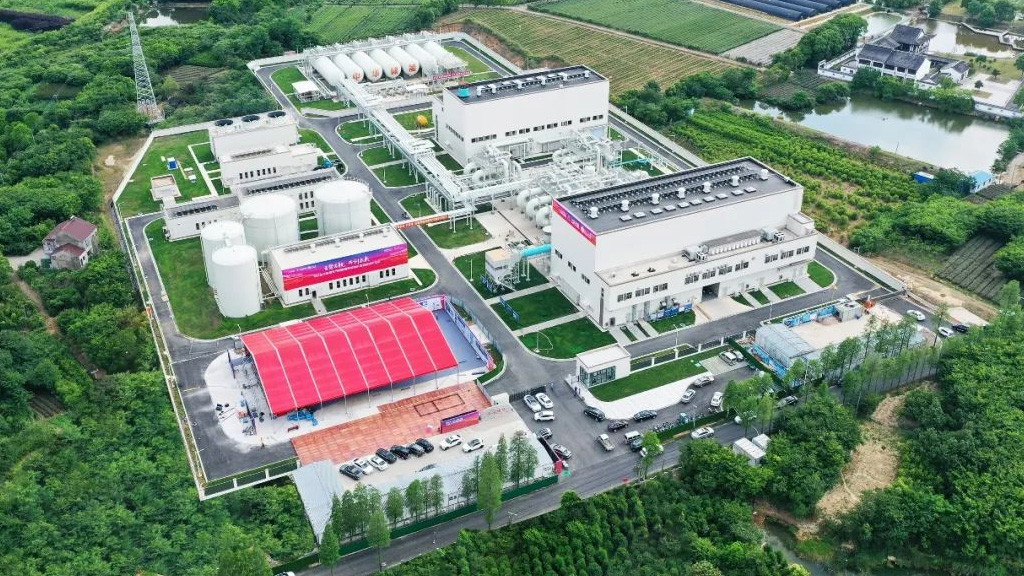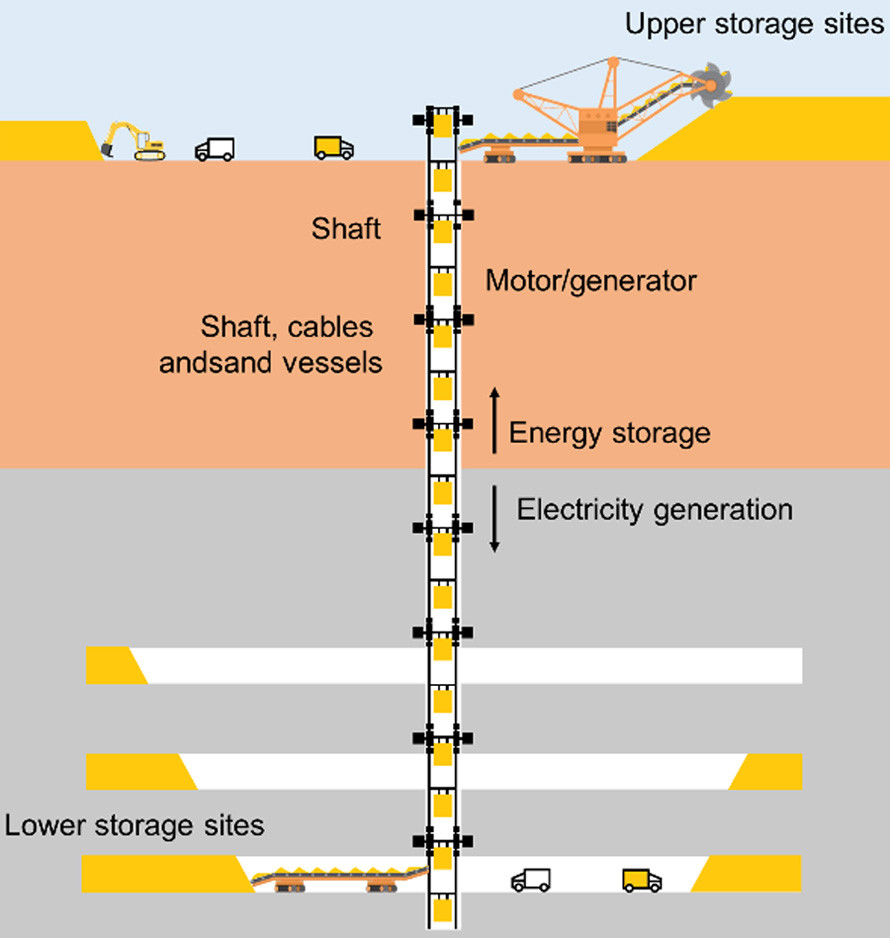
Gravity batteries are the new #1 candidate for storing the excess energy inevitably generated in our systems. There are several startups working on the development of such batteries. They all say that gravity is a reliable friend that will never evaporate and will always work. But finding a place to install such batteries is not an easy task. Recently, researchers have considered that abandoned mines around the world are a cost-effective solution that can also provide jobs. And the number of such mines allows you to store all the energy of the world.
So yes, the decaying mining towns may have another chance.
The eternal problem
One of the problems with energy is where to store excess energy. This is especially true for emerging wind and solar power generation — which often generate more power than the grid can use right away, and then can generate next to nothing for several days. Therefore, energy companies definitely need to somehow store what is left. Usually very expensive batteries are built for this. Or they use entire lakes, pumping water upwards with an excess of energy, and with its shortage, allowing water to drain down, rotating generator turbines.
In China, where thousands of terawatt-hours need to be stored and there are not enough suitable lakes, unique compressed air storage facilities are being built to store energy. This is a market for several tens of billions of dollars. By 2030, the Celestial Empire is going to contain up to 25% of their “extra” energy. One such storage facility, which compresses air with excess energy and allows air to expand when there is a shortage, is already helping to keep the nation’s capital, Beijing, uninterrupted power.

But there is perhaps an even more natural way to store excess energy: gravity. Just lift something, increasing its potential energy. And when necessary, let it go down, giving this energy back in the process. Here you can even not turn any turbines, and not build any complex structures. The efficiency of such a system, according to sensations, can be higher: it has fewer individual parts, at the junctions of which losses can occur. Only one problem remains: where to find storage of this size? And who will build them?
How to store gravity
The construction of giant towers. With huge powerful cranes that would lift 35-ton cement blocks with excess energy, and then let them sink. The concentration of energy is much higher, the extra space is not wasted, and gravity works. The development of this technology is carried out, in particular, by the Swiss startup Energy Vault. It is one of the World Economic Forum’s favorite companies, with hundreds of millions of investments from Saudi Aramco, SoftBank and others. The startup shares are already traded on the stock exchange (NRGV token), the capitalization at the peak was $2.5 billion.

Energy Vault wants to build “smart” gravity towers. With complexes of mega-cranes 120 meters high, six on each tower. They will lift 35-ton blocks, placing them around themselves. It turns out that they will “build” around themselves a huge (but useless) concrete skyscraper, and when necessary, slowly dismantle it. At the same time, special software will play “energy Tetris”, moving the blocks up and down in order to generate or spend energy as efficiently as possible.

Efficiency is promised up to 80-90%, and the total output power (full storage capacity in this case) is from 2 to 5 MW, as in average hydroelectric power plants. But this is still in theory. It all depends on the software algorithms and how well the model will perform in reality.But in general building such tower it is not cheap.
The fact is that there is a much less expensive (and, what is there, more obvious) way to store gravitational energy. Namely, abandoned mines in which, say, gold or coal were once mined.
You don’t even need to build anything! The vaults are ready. Their work does not depend on the weather. They are protected from wind and rain. And they don’t interfere with anyone, they don’t take any extra space at all.
Gold in the mines
New research from the International Institute for Applied Systems Analysis (IIASA) informs us of such a potential path. In it, scientists argue that decommissioned mines can be repurposed to operate gravitational batteries. And they can easily store enough energy to meet the current demands of the entire planet.
In the IIASA project, excess energy is also used to lift heavy objects. And then the load is dropped, driving the turbine and converting the kinetic energy of the fall into electrical energy that is useful for us, which is easier to transfer to consumers.
Theoretically, anything that has a lot of weight, such as water or solid objects, can act as gravitational batteries. In an IIASA study, sand descended and rose in abandoned mine shafts. It was moved back and forth between the upper and lower chambers depending on the need for energy. The good news is that it is completely safe: nothing will happen if it leaks.

Another advantage of the whole process is that usually batteries tend to self-discharge over time. Gradually, they lose the ability to hold the accumulated energy, so that after a few decades it is necessary to invest in their repair or replacement. But the gravity method stores energy in sand (or something else heavy) that doesn’t self-discharge. We can be sure that the accumulated potential energy will remain with us in ten, and in twenty, and in a hundred thousand years.
To accumulate this energy, IIASA proposes to use abandoned mines – of which, according to them, there are already millions on the entire planet. They can be converted very cheaply for this purpose. Most of them already contain the basic infrastructure, are designed to regularly lift large loads and are connected to the public power grid.
Scientists have calculated that the investment costs for underground gravity storage will be from 1 to 10 dollars per kWh, which is relatively inexpensive. The technology is estimated to have a global energy storage potential of between 7 and 70 TWh, with most of this potential concentrated in China, India, the US and Russia. Up to 70 TWh – while, according to the International Energy Association, global energy consumption for 2020 amounted to 24,901.4 terawatt-hours, which is about 68 terawatt-hours per day.
The study also suggests that the operation of gravity batteries in abandoned mines can restore or save some of the jobs lost after the closure of these mines. An unexpected plus.
In general, it turns out to be a rather elegant transition to wind and solar energy – in which the old mines that produced the same coal will turn out to be useful. They won’t have to be buried or made a problem for future generations. It turns out that everything we did before was also not in vain.
References:
1.https://newatlas.com/energy/abandoned-mines-gravity-batteries/
2.https://www.energy-storage.news/construction-starts-on-1-4gwh-compressed-air-energy-storage-unit-in-china/
3.https://edition.cnn.com/2022/03/14/energy/energy-vault-renewable-storage-spc-intl/index.html
4.https://iiasa.ac.at/news/jan-2023/turning-abandoned-mines-into-batteries
5.https://www.newswise.com/articles/turning-abandoned-mines-into-batteries
6.https://en.wikipedia.org/wiki/Gravity_battery
